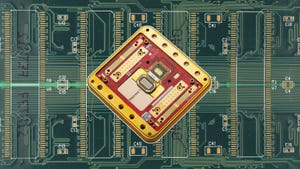The Era of Flash Is NowThe Era of Flash Is Now
Flash storage is expected to drive down energy costs, contribute to sustainability goals, and simplify data center and application architectures.
June 23, 2023

Storage is a fundamental element of enterprise compute. Everyone's data must go somewhere. Up until recently, mechanical spinning disk has been the default storage media for very large data needs. Flash media has steadily eaten away at the hard-disk footprint in the data center, however.
Originally, flash attacked performance-oriented workloads. As the cost per gigabyte of flash has dropped, the technology has recently become cost-effective to replace capacity-oriented storage deployments. In the spring of 2023, major vendors such as NetApp, Dell, and Pure have announced capacity-optimized quad-level cell (QLC) flash-based storage arrays that are writing the obituary for spinning magnetic disk. QLC means smaller, significantly faster storage arrays. It also means far less energy and cooling costs for the data center.
In the Cloud
Businesses are putting more storage in the cloud, and they are bringing the preference for flash with them to the hyperscalers. Flash is evolving, and breaking out of the legacy boxes created by traditional hard-drive technology has been slow, but it is accelerating quickly. Moving from SAS form factors to NVMe has increased performance and reduced deployment sizes.
The next step will be the development of new storage stacks that bypass the sector/block paradigms that have dominated storage for decades. Vendors continue to innovate in this space. For example, Pure claims higher performance through direct access via its DirectFlash Modules. These advances will mean higher-performance cloud offerings and more support for high-performance workloads in cloud environments.
At the Edge(s)
For those moving compute further and further to the edge — to reduce latency, enable better experiences, and adjust to local contexts — they must also drag storage to the edge. It will mean packing enterprise-grade storage needs into tighter spaces and more remote environments, with more flexible form factors. Flash memory has the advantage of being packaged in a variety of ways, as evidenced by its ubiquity in consumer electronics.
Bridging These Worlds Together
As flash begins to dominate most storage use cases, enterprise storage vendors will begin to offer more comprehensive storage management systems that help businesses get data where it needs to be securely, reliably, and with high performance. At the same time, for bulk data needs, flash will drive down energy costs, contribute to sustainability goals, and simplify both data-center and application architectures.
Flash is here and now serving the enterprise in its many deployment arenas. To learn about how this trend affects your enterprise, please reach out and schedule an inquiry with me via [email protected].
This article originally appeared on Forrester's Featured Blogs.
About the Author
You May Also Like







